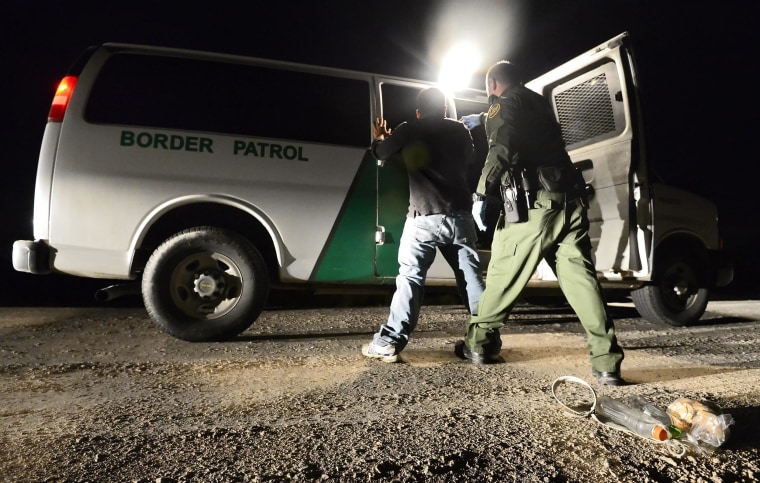The federal agency that guards the nation’s ports and borders released a report Friday criticizing its use of force by its officers and also made public an updated rulebook on when and how to use force.
The release of the more than 1-year old critical review done by the Police Executive Research Forum and commissioned by the agency comes after escalating pressure on Customs and Border Protection over dozens of use of force incidents that have not led to consequences or punishment for officers and agents involved in them.
R. Gil Kerlikowske, commissioner for Customs and Border Protection, CBP, which oversees the Border Patrol and U.S. Customs, said the revised policy handbook on use of force incorporates most recommendations from the PERF review and the inspector general of the Department of Homeland Security, which oversees CBP.
“This (handbook) release and, most importantly, the policy and training changes they represent are the beginning of a continuous review of our responsibility to only use force when it is necessary to protect people,” Kerlikowske said.
Kerlikowske said changes to the handbook include requiring additional training in use of safe tactics, instituting the requirement to carry less-lethal devices _ based on operational needs _ such as tire deflation devices. The handbook also is available in Spanish.
Kerlikowske, in office just three months, said the release of the handbook keeps with his pledge to Congress before his confirmation that transparency and openness were critical. He also said the handbook release was an initial step.
Border Patrol has been under pressure to release its rules of engagement for use of force and that has intensified after the Los Angeles Times obtained a copy of the PERF report and reported its findings in February. The PERF report, which reviewed 67 cases resulting in 19 deaths, found that Border Patrol agents have put themselves in harm’s way to justify use of force.
The government’s refusal to release the report prompted lawsuits from the American Civil Liberties Union, border groups and media. Members of Congress also demanded the report but previously were given only a summary.
Attention to the 2010 death of Anastacio Hernadez Rojas who was beaten and subdued with a Taser and the 2012 death of Valentin Tachiquin, a mother of five, who was shot by a Border Patrol agent who leapt on the hood of her car and shot her dead, intensified criticism and pressure on the agency.
Christian Ramirez, director of the Southern Border Communities Coalition, which represents 60 groups on the nation’s southern border, said the release of the handbook and report is momentous.
“CBP has long been an agency veiled in secrecy. For many, many years we’e been asking CBP to release information to provide us with policies and it has refused to do so. Today’s announcement marks a new chapter for the better in the strained relationship for CBP and the border residents,” Ramirez said.
Since 2012, there have been at least 28 lethal incidents on the U.S.-Mexico border, and they have not been fully investigated by DHS, Department of Justice or Congress, Ramirez said.
Chris Rickerd, policy counsel for the ACLU in Washington, said the release of information makes his group’s lawsuit moot, but he said the ACLU will now monitor the agency to see that the reforms to the policies are translated to practice in the field. One thing groups want is for agents to wear body cameras, which he said protects officers from false accusations and provides factual information on any incidents.
Also outstanding is whether officers and agents in any of the lethal or other serious incidents have been held accountable, charged with any crimes or civil violations or whether they remain on duty. The PERF report did not discuss ongoing investigations, Rickerd said.
“There has to be criminal and disciplinary consequences to these actions,” Rickerd said.
A review of the use of force policy changes by Ramirez Friday found the following changes, all recommendations made in the PERF review.
_Report all incidents of use of force for the agency to review.
_Limit use of Tasers to situations in which the subject is resisting in a manner that will cause injury; Do not apply more than three times or to sensitive areas, in flammable situations or use on children or on other vulnerable populations.
_Do not shoot at moving vehicles unless imminent threat of serious injury or death; do not shoot at fleeing vehicles; do not place yourself in the path of a moving vehicle.
_Do not shoot in response to projectiles unless there is a danger of serious death or injury. Seek cover or remove yourself from the path of a moving vehicle.
